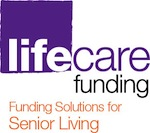Many attorneys and financial professionals struggle over how to properly designate the beneficiary of an IRA. While it can be confusing, understanding the core elements of the procedure greatly simplifies the designation process and offers multiple solutions. The three key elements one must analyze before designating the beneficiary are as follows: first, what is the overall intention of the IRA owner; second, who is the intended beneficiary; and third, what is the proper language to use on the IRA beneficiary designation form. As we examine and grow to understand these three issues, great practice opportunities will emerge.
 The most important element in determining the proper IRA designation is the overall goal of the IRA owner. If the owner’s goal is simply to transfer the IRA interest to someone else at death, then a simple designation to the individual will suffice. The challenge comes when we start to identify more advanced goals. What happens if the IRA owner intends for the beneficiary to receive the IRA protected from the beneficiary’s predators and creditors? What if the owner wants the beneficiary to receive the IRA over a lifetime rather than all at once? These are situations in which a mere direct designation to the beneficiary will not accomplish a client’s goal.
The most important element in determining the proper IRA designation is the overall goal of the IRA owner. If the owner’s goal is simply to transfer the IRA interest to someone else at death, then a simple designation to the individual will suffice. The challenge comes when we start to identify more advanced goals. What happens if the IRA owner intends for the beneficiary to receive the IRA protected from the beneficiary’s predators and creditors? What if the owner wants the beneficiary to receive the IRA over a lifetime rather than all at once? These are situations in which a mere direct designation to the beneficiary will not accomplish a client’s goal.
The U.S. Supreme Court, in Clark v. Remeker, ruled that funds held in an inherited IRA do not constitute “retirement funds” and thereby do not derive the same protection benefits as the original IRA. (573 US, 2014). The one exception to this ruling occurs if the beneficiary is the surviving spouse and the surviving spouse rolls the decedent’s IRA into his or her own IRA. However, although the surviving spouse may be permitted to make distributions from the IRA over his or her life expectancy, such withdrawals will not necessarily be protected. Further, while a surviving spouse can maintain the protection of the original IRA owner, the surviving spouse can lose the IRA proceeds to his or her long-term care costs.
If the goal of the IRA owner is to preserve the IRA for the benefit of his or her beneficiaries and protect it from said beneficiaries’ creditors and predators, then a direct designation of the beneficiary must not occur. Currently, the only way to absolutely protect an IRA from the creditors and predators of the beneficiaries is to designate an irrevocable trust as the IRA beneficiary and designate the intended IRA beneficiaries as the beneficiaries of said trust. This two-step approach assures continued protection of the IRA funds after the death of the original plan holder and for the lifetime of the trust. The challenge for practitioners now becomes how to effectively name a trust as the IRA beneficiary and how that designation impacts the individuals intended to benefit from the IRA.
A trust can be a qualified designated beneficiary of an IRA without violating the IRS rules that require a “stretch out” of the payments from the IRA over the lifetime of the beneficiary. The four criteria to ensure compliance with the “stretch” rule necessitate the trust (1) to be valid under state law, (2) to be irrevocable at the death of the grantor, (3) to have all beneficiaries clearly "identified" within the statutory time period, and (4) a copy of the trust must be provided to the IRA plan administrator. These conditions can easily be met, but the most common violation is in having a qualified beneficiary that is identifiable.
An identifiable trust beneficiary must be clearly identified by the terms of the trust prior to September 30 of the year following the IRA owner's death. While this seems simple, it typically is violated in two fashions. First, a nonhuman beneficiary is named, creating a situation where there is no measurable life in being (i.e. a charity). Second, the terms of the trust do not clearly identify a beneficiary that can be named within the statutory time period. This violation typically occurs when the terms of the trust require some condition precedent to the vesting of the beneficial interest. While appearing complicated, once a practitioner has an understanding of these two issues, language can easily be inserted into the trust to ensure that those provisions are not violated. As Lawyers with Purpose members, our client-centered software system has all necessary language to ensure that the provisions are not violated by providing clear and proper warnings when an attorney makes choices that could put the stretch out in danger. Once the trust beneficiaries are properly identified, a trust can be named as beneficiary to maintain the asset protection for a non-spousal beneficiary (or spousal beneficiary if long-term care costs are an issue).
The final step lies in properly naming the trust as the beneficiary of the IRA. This requires an attorney to have a clear understanding of the distinction between outside beneficiary designations and inside beneficiary designations. Outside beneficiary designations reference beneficiary designations made outside of the trust on the beneficiary designation form of the IRA itself. Typical outside beneficiary designations are the trust, a specific article within the trust, or a particular beneficiary within the trust pursuant to a particular article. Examples of these outside designations could be as follows: “Pay to the trustee of the ABC trust dated 1/1/2015,” “pay to the trustee of the family trust under Article Four of the ABC trust dated 1/1/2015,” or “pay to the trustees of each separate share trusts under Article Five of the ABC trust dated 1/1/2015.” These three outside beneficiary designations distinguish which beneficiaries of the trust will receive the IRA. More importantly, these designations will also distinguish the stretch period based on the life expectancy of the oldest beneficiary inside the designated trust (the general trust, the family trust, or the separate share residuary trusts).
Inside designations refer to the specific beneficiaries named inside the trust document. When the proper inside designations are made after the correct outside designation, meaningful and comprehensive protection is afforded the client. Typically, a family trust will name the spouse and children of the client as beneficiaries. In such a situation, the oldest beneficiary would likely be the surviving spouse and therefore trigger a much shorter stretch-out period. In addition, a second stretch period at the death of the surviving spouse would be lost because it was not rolled into the surviving spouse’s IRA. Alternatively, when a residuary trust is named as outside beneficiary, the IRS would then examine all beneficiaries inside the residuary trust and choose the oldest beneficiary for the measuring life of the stretch. Finally, when the outside beneficiary is designated as separate share trusts, each separate share trust under the particular article would be analyzed to identify the oldest beneficiary therein. Typically in each separate share trusts there is only one beneficiary, so each beneficiary would use his or her age as the measuring life for stretch calculations.
Disclaimers are an important tool to consider in conjunction with outside and inside designations in IRA planning. Disclaimers may be effectively used on both outside and inside beneficiary designations. The use of disclaimers can create a variety of options to meet the overall goals of the client after death.
Proper inside and outside beneficiary designations together with the effective use of disclaimers are powerful planning tools. As an example, let’s analyze a situation in which a client desires to leave his IRA to his spouse of the same age, while still getting the most return on his investment for his wife and children. In this scenario, the client’s outside IRA beneficiary designation form names a family trust as the primary beneficiary and the surviving spouse as the contingent beneficiary of the IRA.
When the client names the family trust on the outside beneficiary designation form, the trustee of the family trust accepts the IRA designation. The surviving spouse, as sole inside beneficiary of the family trust, may choose not to benefit from the IRA. In accordance with the terms of the family trust, she can disclaim her interest in the family trust within the trust document. The IRA must then be paid in accordance with the trust terms to the residuary trust and the oldest of the residuary trust beneficiaries (in this scenario, the client’s oldest child) becomes the measuring life for the stretch.
Alternatively, as primary outside beneficiary, the trustee could disclaim the trust’s interest in the IRA in accordance with the outside beneficiary designation form before it is ever transferred into the family trust, resulting in the IRA going directly to the contingent outside beneficiary designation, the surviving spouse. The surviving spouse could then roll the inherited IRA into her own IRA and get all the benefits associated therewith. As evidenced, this plan permits an examination of the surviving spouse's health and income with regard to long-term care costs at our client’s death. In doing so, we have given our client and his spouse the greatest opportunity to ensure that the overall protection goals of the IRA owner (client) are met.
By understanding and implementing the three key elements in determining IRA beneficiary designations (the overall intention of the IRA owner; the intended beneficiary; and proper language to use on the IRA beneficiary designation form), we as LWP attorneys are able to provide our clients with the best IRA distribution plan to fit their desires and needs.
For a deeper understanding of Lawyers With Purpose and what we have to offer your estate planning and/or elder law practice, join us in Phoenix, AZ, in October. If you are even considering coming to this event register today – The first 2.5 days of the program are officially SOLD OUT and the room is at capacity. We still have a few spots left for the BIG Tri-Annual Practice Enhancement Retreat that kicks off Wednesday afternoon. For registration information contact Amanda Ross at aross@lawyerswithpurpose.com or call 877-299-0326.
David J. Zumpano, Esq, CPA, Co-founder Lawyers With Purpose, Founder and Senior Partner of Estate Planning Law Center
 Where is the revenue that I need coming from this month?
Where is the revenue that I need coming from this month?









